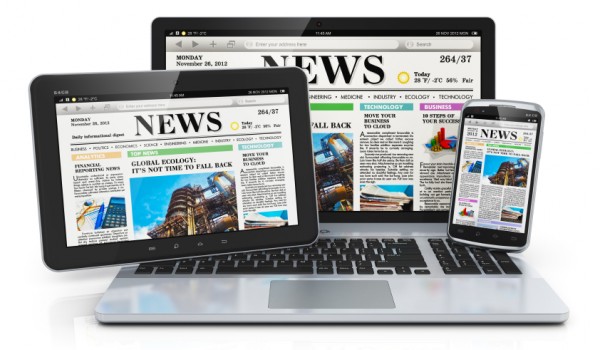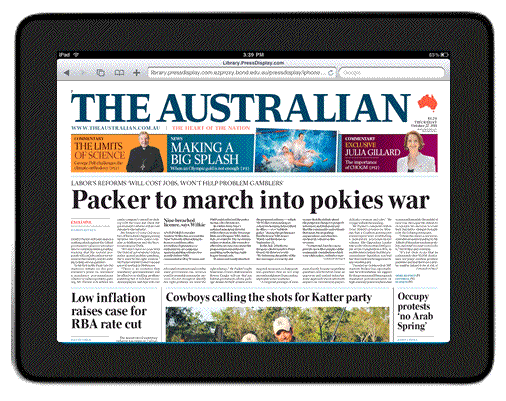When personal challenges affect professional life, a family lawyer may help someone through divorce or custody negotiations while they still showing up to work every day. In the workplace, change leadership provides structure When personal challenges affect professional life, a family lawyer may help someone through divorce or custody negotiations while they still showing up to work every day. In the workplace, change leadership provides structure and direction during periods of uncertainty or transition. A skilled HR consultant bridges both, offering support systems that address the emotional and practical realities of change. Together, these roles remind us that navigating change—whether personal or organisational—requires confidence built on empathy, clarity, and resilience.
Change is inevitable, but confidence in the face of it is something that can be nurtured. Whether it’s a restructure at work, a shift in leadership, or a life event that ripples into the professional realm, people need both tools and support to manage uncertainty effectively. Leaders who recognise this human side of change foster stronger, more adaptable teams and cultures.

One of the most important factors in navigating change successfully is communication. People don’t resist change as much as they resist the unknown. When employees, clients, or stakeholders understand what’s happening, why it’s happening, and how they’re being supported, their trust increases—even if the transition is difficult. Clear, consistent messaging not only reduces anxiety but also helps people make better decisions under pressure.
This is especially true in professional environments where personal changes—such as divorce, illness, or caregiving responsibilities—can affect performance and engagement. Supporting employees through life transitions doesn’t just reduce disruption; it shows that the organisation values its people beyond their output. It creates psychological safety, which is essential for creativity, collaboration, and growth.
HR professionals and team leaders can play a significant role here by building adaptable workplace policies. Flexible scheduling, confidential support resources, and manager training in compassionate communication can make a real difference. These efforts don’t need to be expensive or complex—they just need to be thoughtful and human.
At an organisational level, change leadership requires both strategic planning and emotional intelligence. Leaders must balance goals with empathy, timelines with human realities. They must model resilience without pretending everything is easy. This kind of leadership sets the tone for the remaining of the organisation, creating a ripple effect that impacts how teams respond and adapt.
Confidence in times of change is also strengthened by participation. When people are invited to co-create solutions, offer feedback, or share their concerns, they feel more in control. This sense of agency reduces resistance and increases commitment to new directions. Whether it’s through surveys, roundtable discussions, or informal check-ins, giving people a voice helps them find their footing.
From a practical perspective, navigating change with confidence also means building a roadmap. What does the process look like? What resources are available? What milestones mark progress? Whether it’s a company undergoing transformation or an individual managing a major life event, structure brings stability. It helps people shift their focus from what they’re losing to what they’re building.
Of course, not all change is chosen. Sometimes it arrives suddenly and without warning. In these cases, having a supportive foundation already in place makes a big difference. When leaders foster cultures of trust, flexibility, and respect ahead of time, their organisations are better equipped to handle unexpected shifts.
Resilience training, mental health resources, and peer support networks all contribute to this foundation. So does normalising conversations about change—not just when it happens, but as a regular part of team dialogue. When people are encouraged to reflect on how they respond to uncertainty, they build self-awareness and emotional agility—two skills that serve them in every area of life.
It’s also important to remember that change doesn’t affect everyone equally. What feels like a small adjustment to one person may be a major disruption for another. Inclusive leadership means recognising these differences and adapting support accordingly. It means understanding that identity, culture, personality, and lived experience all shape how someone perceives and responds to change.
For individuals, navigating change with confidence starts with mindset. Rather than seeing change as something that happens to them, confident individuals see it as something they can influence, even in small ways. They ask questions, seek support, and make choices that align with their values. They recognise that it’s okay to feel uncertain, but they don’t let that stop them from moving forward.
Coaching and mentorship can help reinforce this mindset. Leaders and HR professionals who are trained in active listening and future-focused dialogue can help individuals reframe challenges and identify next steps. This approach doesn’t ignore difficulty—it acknowledges it while focusing on growth and potential.
Sometimes, the most powerful form of support is simply holding space. Allowing someone to express fear, confusion, or even resistance without judgment creates a starting point for transformation. In this space, people can process emotions, reconnect with their strengths, and begin to rebuild confidence.
All in all, navigating change with confidence isn’t about having all the answers. It’s about trusting that you can find them—or build new ones—as you go. It’s about staying grounded in your values while staying open to new possibilities. And it’s about recognising that while change may be uncertain, your ability to face it is something you can strengthen every day.


































 The apparent first challenge in designing your company static is the creation of a company logo. If you do not already have one,
The apparent first challenge in designing your company static is the creation of a company logo. If you do not already have one,  Biometric clothing
Biometric clothing For much of your life you may have been told you cannot do certain activities. Knowing these risks can help you create your own decisions about what physical activities are ideal for you. Perhaps you will decide not to participate in a contact or collision sport like baseball or football since you know the probability of serious injuries to the head, neck, and spine is high–and, naturally, a neck brace (or mind bleed) would put a serious damper on your social life. If tennis is the right sport for you
For much of your life you may have been told you cannot do certain activities. Knowing these risks can help you create your own decisions about what physical activities are ideal for you. Perhaps you will decide not to participate in a contact or collision sport like baseball or football since you know the probability of serious injuries to the head, neck, and spine is high–and, naturally, a neck brace (or mind bleed) would put a serious damper on your social life. If tennis is the right sport for you  Whether you are playing organized sports, pick-up games, or nontraditional sports like dancing, you might want to bear in mind what could happen as you’re playing. The safest sporting activities have risks, including dehydration and sunburn. When playing any type of sport, it is important to drink lots of liquid, and if you are exposed to UV rays, to wear sun screen. If you avoid the
Whether you are playing organized sports, pick-up games, or nontraditional sports like dancing, you might want to bear in mind what could happen as you’re playing. The safest sporting activities have risks, including dehydration and sunburn. When playing any type of sport, it is important to drink lots of liquid, and if you are exposed to UV rays, to wear sun screen. If you avoid the  Regardless of the appeal, it is not the best of times for luxury car makers, especially if you want to
Regardless of the appeal, it is not the best of times for luxury car makers, especially if you want to  Raw performance and security aside, the subjective value of standing does add to the value of a luxury and durability of an expensive vehicle. Researchers in Consumer Reports might not place any stock in new names, but anyone concerned with ‘keeping up with the Joneses’ does.
Raw performance and security aside, the subjective value of standing does add to the value of a luxury and durability of an expensive vehicle. Researchers in Consumer Reports might not place any stock in new names, but anyone concerned with ‘keeping up with the Joneses’ does. behalf with different banks to locate the best mortgage lenders who best fit your requirements with the lowest prices. Mortgage brokers have a well-developed list of lenders that they work with, making your life easier.
behalf with different banks to locate the best mortgage lenders who best fit your requirements with the lowest prices. Mortgage brokers have a well-developed list of lenders that they work with, making your life easier. GUI Testing is essential to be certain that the displays of a product correspond to the accepted mockups and wireframes. However, this may not provide a comprehensive simulation since different browsers and operating systems can exhibit the layout otherwise. Usability testing is aimed at analyzing the product’s UX and making suggestions on the improvement of consumers’ interaction with the system. To make things work properly, you can differentiate certain groups of consumers and execute revision Testing. This helps ensure that the user experience of routine users differs from the administrator.
GUI Testing is essential to be certain that the displays of a product correspond to the accepted mockups and wireframes. However, this may not provide a comprehensive simulation since different browsers and operating systems can exhibit the layout otherwise. Usability testing is aimed at analyzing the product’s UX and making suggestions on the improvement of consumers’ interaction with the system. To make things work properly, you can differentiate certain groups of consumers and execute revision Testing. This helps ensure that the user experience of routine users differs from the administrator.  And it is not only the amount Australians are spending on alcohol annually, but also the cost to their health long term, as Australians will potentially wind up paying for this risky lifestyle later in life, through health care and much more expensive life insurance premiums as Aussies beverage 96 million litres of spirits yearly, the analysis revealed. Australians consume around 1650 calories from Alcoholic drinks weekly, and alcohol intake cost between $1300 and $4700 annually. Western Australians are the biggest drinkers normally, another study of information from Torrens University, that research found individuals aged 15 years and over consumed over two standard alcoholic drinks each day typically.
And it is not only the amount Australians are spending on alcohol annually, but also the cost to their health long term, as Australians will potentially wind up paying for this risky lifestyle later in life, through health care and much more expensive life insurance premiums as Aussies beverage 96 million litres of spirits yearly, the analysis revealed. Australians consume around 1650 calories from Alcoholic drinks weekly, and alcohol intake cost between $1300 and $4700 annually. Western Australians are the biggest drinkers normally, another study of information from Torrens University, that research found individuals aged 15 years and over consumed over two standard alcoholic drinks each day typically. Whatever the reason, the quantity of food dollars spent on restaurants and take-away has steadily improved through time, from 34 percent in 1974 to 50 percent in 2014. That is a good deal of grub on the go. Being a foodie is not a crime, but a lot of millennials say they wind up spending more on programs like Grubhub or Seamless, because of delivery surcharges and minimums. Similarly, thanks to ease of those services, they quickly rack up charges with the click of a button, not realizing just how much they are forking over. Managing editor of The Financial Diet Holly Trantham remembers spending nearly $300 on Seamless alone in her first month in NYC, admitting it was “half novelty and half advantage.”
Whatever the reason, the quantity of food dollars spent on restaurants and take-away has steadily improved through time, from 34 percent in 1974 to 50 percent in 2014. That is a good deal of grub on the go. Being a foodie is not a crime, but a lot of millennials say they wind up spending more on programs like Grubhub or Seamless, because of delivery surcharges and minimums. Similarly, thanks to ease of those services, they quickly rack up charges with the click of a button, not realizing just how much they are forking over. Managing editor of The Financial Diet Holly Trantham remembers spending nearly $300 on Seamless alone in her first month in NYC, admitting it was “half novelty and half advantage.” purpose built mobile websites
purpose built mobile websites An Aldermore spokesperson also mentioned that to be able to make sure that they are best fulfilling the demands of their agents today, and later on, they regularly engage together and take their opinions on board to make sure that they’re providing a competitive service
An Aldermore spokesperson also mentioned that to be able to make sure that they are best fulfilling the demands of their agents today, and later on, they regularly engage together and take their opinions on board to make sure that they’re providing a competitive service 

 Climate-change rejection seems on the verge of becoming major U.S. policy. But all expect that decreasing our carbon footprint is not lost. Case in point is the pending Timber Innovation Act, among the uncommon environment-friendly pieces of legislation that delights in bipartisan assistance. The expense (H.R. 1380, S. 538) looks to develop a market for so-called mass wood structures and timber products more than 85 feet high that are constructed from panelized wood building and construction items such as cross-laminated wood (CLT) and glued-laminated lumber (glulam).
Climate-change rejection seems on the verge of becoming major U.S. policy. But all expect that decreasing our carbon footprint is not lost. Case in point is the pending Timber Innovation Act, among the uncommon environment-friendly pieces of legislation that delights in bipartisan assistance. The expense (H.R. 1380, S. 538) looks to develop a market for so-called mass wood structures and timber products more than 85 feet high that are constructed from panelized wood building and construction items such as cross-laminated wood (CLT) and glued-laminated lumber (glulam).


 Nevertheless, based upon an in-depth analysis of existing federal government costs programs, BIS is anticipating public sector-funded engineering construction to rise to a peak of more than $35 billion by 2018/19, nearly 30 percent above its 2015/16 level. This offsets even more falls anticipated in privately-funded engineering building and construction – especially in the project and quality management system of the LNG-heavy oil and gas section – keeping overall engineering building and construction activity in the $75-80 billion per year range.
Nevertheless, based upon an in-depth analysis of existing federal government costs programs, BIS is anticipating public sector-funded engineering construction to rise to a peak of more than $35 billion by 2018/19, nearly 30 percent above its 2015/16 level. This offsets even more falls anticipated in privately-funded engineering building and construction – especially in the project and quality management system of the LNG-heavy oil and gas section – keeping overall engineering building and construction activity in the $75-80 billion per year range. An online newspaper that is also called a web newspaper is a daily newspaper which is published and read over the Internet. Such a daily can be an individual online publication or the web-version of a printed daily.
An online newspaper that is also called a web newspaper is a daily newspaper which is published and read over the Internet. Such a daily can be an individual online publication or the web-version of a printed daily. les published in the weekends in various newspapers of UK. The Southport Reporter is also an example of online newspaper in the UK.
les published in the weekends in various newspapers of UK. The Southport Reporter is also an example of online newspaper in the UK.